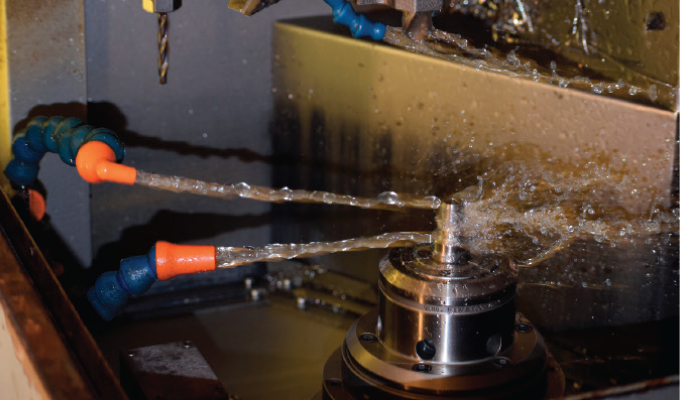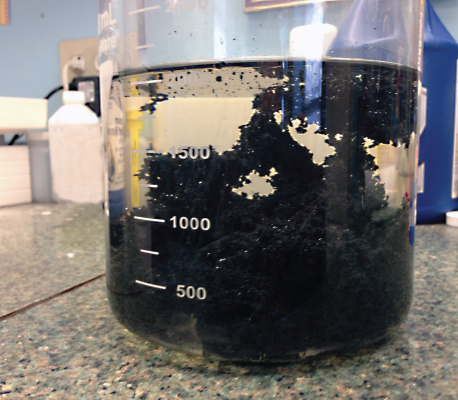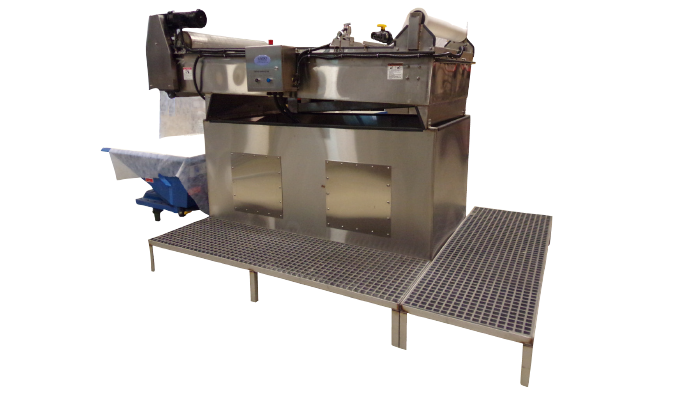Truck repair and service shops with motor vehicle waste disposal wells—floor drains or sinks in service bays that connect to a septic system or dry well—are regulated by the EPA.
During normal truck repair and maintenance, fluids such as engine oil, transmission fluid, power steering fluid, brake fluid, antifreeze, solvents, and degreasers may drip or spill into floor drains or sinks in service areas. Disposal of these fluids through such motor vehicle waste disposal wells may contaminate groundwater, so the EPA regulates these wells to prevent groundwater contamination in certain areas.
According to the EPA, motor vehicle waste disposal wells are banned nationwide if the well was constructed after April 5, 2000, in groundwater protection areas near public water systems that provide groundwater used for drinking.
However, some states may waive the ban and issue a permit if certain procedures are followed.
The EPA states that “at a minimum, permits require … (that) waste fluids must meet drinking water standards called Maximum Contaminant Levels (MCLs) at the point of injection. This means that shop wastewater, before it is discharged into the ground, must not exceed any MCL.”
Additionally, the EPA requires that “you implement the best management practices described in your permit to minimize the amount of contaminants in your shop wastewater” and “you monitor the wastewater being discharged into the ground and sludge to ensure continued compliance with MCLs, as required by your permit.”
The EPA states that, “If your wastewater does not meet drinking water standards, you have two options: install ‘pretreatment equipment’ that treats the wastewater before it goes to the drain (or) close the well according to the permitting authority’s directions.”
TREATMENT SYSTEMS
For any truck service shop, this means installing a wastewater treatment system that effectively separates the contaminants from the water so it can be legally discharged into motor vehicle waste disposal wells.
However, traditional wastewater treatment systems can be complex, often requiring multiple steps, a variety of chemicals, and a considerable amount of labor. Even when the process is supposedly automated, too often technicians must still monitor the equipment in person. This usually requires oversight of mixing and separation, adding of chemicals, and other tasks required to keep the process moving. Even then the water produced can still fall below mandated requirements.
Although paying to have truck maintenance wastewater hauled away is also an option, it is extraordinarily expensive. In contrast, it is much more cost effective to treat the wastewater at its source, so treated effluent can go into a motor vehicle waste disposal well. As an alternative, if necessary with sufficient treatment and accommodation, it could also potentially go into a sewer; and if treated sludge passes a TCLP (Toxicity Characteristics Leaching Procedure) test it could be disposed of as non-hazardous waste in a local landfill.
Fortunately, complying with EPA and local wastewater regulation has become much easier with more fully automated, wastewater treatment systems. Such systems not only reliably meet regulatory wastewater requirements, but also significantly reduce the cost of treatment, labor, and disposal when the proper Cleartreat® separating agents are also used.

AUTOMATED TREATMENT
In contrast to labor-intensive multiple step processes for truck stops and service bays, automated wastewater treatment can help streamline production, usually with a one-step process, while lowering costs at motor vehicle service facilities.
An automated wastewater treatment system can eliminate the need to monitor equipment in person while complying with EPA and locally mandated requirements. Such automated systems separate suspended solids, emulsified oil and heavy metals, and encapsulate the contaminants, producing an easily de-waterable sludge in minutes, according to truck service consultants at Sabo Industrial Corp., a manufacturer, distributor, and integrator of industrial waste treatment equipment and solutions.
The water is typically then separated using a de-watering table or bag filters before it is discharged into motor vehicle waste disposal wells or sewer systems. Other options for de-watering include using a filter press or rotary drum vacuum. The resulting solids are non-leachable and are considered non-hazardous, so solids pass all required testing.
These systems are available as manual batch processors, semi-automatic, and automatic and can be designed to provide a legally dischargeable effluent suitable for the sewer system. A new, fully customized system is not always required. In many cases, it can be faster and more cost effective to add to or modify a truck facility’s current wastewater treatment systems when this is feasible.
The first step in evaluating the potential cost savings and effectiveness of a new system is to sample the wastewater to determine its chemical makeup followed by a full review of EPA and local water authority requirements, say truck service consultants at Sabo Industrial.
The volume of wastewater that will be treated is also analyzed to determine if a batch unit or flow-through system is required. Other considerations include the size restrictions so the system fits within the facility’s available footprint.

SEPARATING AGENTS
Despite all the advances in automating truck wastewater treatment equipment, any such system requires effective separating agents that agglomerate with the solids in the wastewater so the solids can be safely and effectively separated out.
Because of the importance of separating agents for wastewater treatment, Sabo Industrial uses a special type of bentonite clay in a line of wastewater treatment chemicals called Cleartreat. This line of wastewater treatment chemicals is formulated to break oil and water emulsion, provide heavy metals removal, and promote flocculation, agglomeration, and suspended solids removal.
Bentonite has a large specific surface area with a net negative charge that makes it a particularly effective adsorbent and ion exchange for truck shop wastewater treatment applications to remove pollutants, heavy metals, etc. As such, bentonite is essential to effectively encapsulate the materials. This can usually be achieved in one-step treatment, which lowers process and disposal costs.
In contrast, polymer-based products do not encapsulate the toxins, so systems that use that type of separating agent are more prone to having waste products leach back out over time or upon further agitation.
In the case of a heavy equipment dealer with six locations in New York and Connecticut, an EconoFlow wastewater treatment system using a bentonite-based Cleartreat formulation was required for wastewater created by equipment washdowns. The wastewater contained oil, grease, suspended solids, heavy metals, and cleaning agents.
For the application, Sabo Industrial supplied an EconoFlow 10-gallon per minute unit, which included a 24-bag filter tank, a single stage bag filter housing, final polishing vessels, and an 850-gallon storage tank for water reuse. The system also has Human Machine Interface (HMI) capabilities that allow remote monitoring and adjustment of the equipment as needed. The system provides reliable, one-step wastewater treatment and legally dischargeable or reusable effluent.
BE COMPLIANT
Today’s automated systems along with the most effective Cleartreat separating agents can provide truck service shops with an easy, cost-effective alternative so they remain compliant with the EPA and local ordinances. Although there is a cost to these systems, they do not require much attention and can easily be more economical than paying fines or hauling.
FOR MORE INFORMATION
Find out more, visit www.saboindustrial.com.




